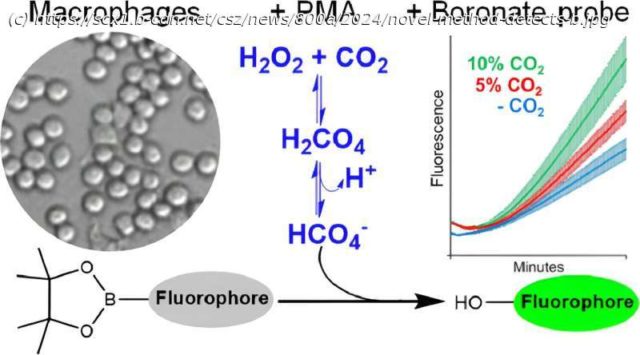High levels of carbon dioxide (CO2) in the atmosphere can alter not only the climate of our planet but also the functioning of our cells. The gas interacts with hydrogen peroxide (H2O2), which performs various functions in the human body, giving rise to a potent oxidant called peroxymonocarbonate.
High levels of carbon dioxide (CO2) in the atmosphere can alter not only the climate of our planet but also the functioning of our cells. The gas interacts with hydrogen peroxide (H2O2), which performs various functions in the human body, giving rise to a potent oxidant called peroxymonocarbonate.
« More and more evidence is emerging that peroxymonocarbonate is important in both cells’ adaptive responses via redox signaling and in cellular dysfunction. There is also epidemiological evidence that the levels of CO2 our cities are close to reaching cause a number of physiological problems. And the mechanisms underlying the toxicity of CO2 are poorly understood », said Ohara Augusto, full professor at the University of São Paulo’s Chemistry Institute (IQ-USP) in Brazil.
A study, led by Augusto and published in the journal Chemical Research in Toxicology, describes a novel method of detecting peroxymonocarbonate in cells based on the use of fluorescent molecular probes. This is the first time the substance has been detected in cells. The study was conducted under the aegis of the Center for Research on Redox Processes in Biomedicine (Redoxome).
« This research is important both because it has produced a method to show that peroxymonocarbonate is produced under certain conditions, including cellular conditions, and because it has raised this as a topic for discussion, a boon considering the scant attention paid to CO2 in the redox field », Augusto said.






